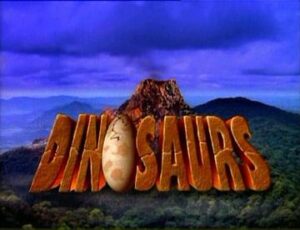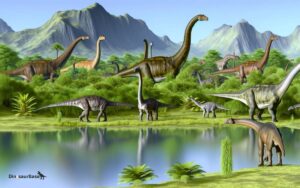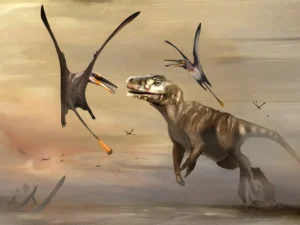Can Dinosaur DNA Be Recovered? Unveiling Jurassic Secrets!
Dinosaur DNA recovery remains highly unlikely due to DNA degradation over millions of years. Preserved genetic material has not been found in fossils.
The enigma of the prehistoric world continues to fascinate us, with dinosaurs at the heart of this ancient puzzle. Despite remarkable fossil finds, the ability to extract and study dinosaur DNA evades scientists due to the fragile nature of genetic material and its propensity to decay beyond recovery.
Extensive research and advancements in paleogenetics provide insights into ancient life, although these rarely extend to the Mesozoic era when dinosaurs roamed the Earth. The quest to unearth dinosaur DNA fuels scientific exploration and innovation, yet the reality of achieving this breakthrough remains distant with current technology. Understanding this limitation propels our quest for knowledge through alternative means, such as examining fossilized bones and trace remnants to unlock the secrets of these magnificent creatures.

The Lure Of Dinosaur Dna
The Lure of Dinosaur DNA has a grip on our culture’s heart and mind like nothing else in paleontology. Mysteries from a world millions of years before our time tantalize scientists and enthusiasts alike. The very idea of finding and studying dinosaur DNA holds a promise of time travel to the age of the magnificent creatures that once roamed our planet.
Captivating Imaginations Across The Globe
Dinosaur DNA whispers tales of prehistoric life, feeding our curiosity. Access to their genetic material could help solve countless mysteries:
- Unlocking evolutionary puzzles – Comparing their genes with modern species
- Reviving ancient lifeforms – Potentially bringing dinosaurs back
- Understanding extinct ecosystems – Gaining insights into past climates and habitats
Jurassic Park: Impact On Public Expectations
The film Jurassic Park did more than entertain; it planted a seed of possibility in the popular imagination. The concept of cloning dinosaurs from preserved DNA was no longer relegated to fiction.
| Public Belief | Scientific Reality |
|---|---|
| Dinosaur cloning is within reach | Current technology cannot recover or clone ancient DNA |
| Ancient mosquitoes can be DNA reservoirs | DNA degrades too much over millions of years |
The gap between what is hoped for and what is scientifically feasible challenges both researchers and the public. Though the quest continues, the reality behind recovering dinosaur DNA remains elusive. This struggle between expectation and possibility fuels the ongoing fascination and debate around the topic.

Credit: www.amazon.com
Dinosaur Dna Basics
Imagine holding a piece of history in your hands. Dinosaur DNA could unlock secrets from an ancient world. But can we actually recover it? Let’s dig into the fascinating science behind dinosaur DNA and why it matters.
What Is Dna And Why Does It Matter?
DNA is the blueprint of life. It carries genetic information that shapes creatures. Understanding DNA helps us learn how dinosaurs lived, looked, and evolved.
- Acts as a living organism’s building plan.
- Carries genes passed from parents to offspring.
- Reveals connections between different species.
The Lifespan Of Dna: How Long Can It Last?
DNA doesn’t last forever. It degrades over time.
| Condition | Effect on DNA Lifespan |
|---|---|
| Cold | Slows down degradation |
| Heat | Speeds up degradation |
| Moisture | Encourages breakdown |
Scientists believe that DNA can’t last more than a million years, even in the best conditions. Since dinosaurs lived over 65 million years ago, recovering DNA is highly challenging.
Historical Attempts To Extract Dinosaur Dna
The possibility of recovering DNA from dinosaurs has long fascinated scientists and the public alike. Picture creatures that roamed the Earth millions of years ago being brought to life through their genetic blueprint. It’s a topic ripe with questions and attempts to find elusive answers.
Early Explorations And Scientific Efforts
Scientists embarked on this quest with optimism and caution. They first focused on amber-encased insects that fed on dinosaur blood.
- Dinosaur bones were also considered potential DNA reservoirs.
- These early strategies faced significant hurdles, such as DNA degradation.
- Contamination from modern organisms made proving authenticity tough.
Breakthroughs And Setbacks In Dna Recovery
Over time, some studies claimed to have identified dinosaur DNA.
| Year | Discovery | Verification |
|---|---|---|
| 1994 | Possible Dino DNA in amber | Later disproved |
| 2013 | Proteins from dinosaur fossils | Ongoing research |
Each claimed breakthrough faced scrutiny and often, retractions.
- Technological advances have opened new doors.
- Most efforts have led to the conclusion that DNA degrades too quickly.
This quest continues to push the boundaries of science and imagination.
Modern Techniques In Dna Retrieval
Modern Techniques in DNA Retrieval open a thrilling chapter in the study of ancient life. Scientists dream of unlocking secrets from our prehistoric past. Key among these secrets is dinosaur DNA. Could innovative approaches bring us closer to dinosaur genetic blueprints? Let’s explore the cutting-edge tools researchers are employing in the quest for ancient genomes.
Cutting-edge Technologies And Methodologies
Recent advances spotlight revolutionary techniques in DNA extraction and analysis. These include:
- Improved Polymerase Chain Reaction (PCR): Amplifying tiny DNA fragments.
- Next-Generation Sequencing (NGS): Rapidly reading DNA sequences.
- Mass Spectrometry: Identifying molecular components.
Researchers hope these tools might one day reveal authentic dinosaur DNA. The harsh reality is DNA degrades over time. Despite this challenge, work continues on refining these technologies.
Comparison With The Study Of Ancient Dna In Other Species
Looking at other species gives us hope. DNA recovery from ancient humans and extinct animals, like mammoths, shows potential.
| Species | Age of DNA Sample | Recovery Success Rate |
|---|---|---|
| Neanderthals | Up to 100,000 years | High |
| Woolly Mammoths | Up to 1 million years | Moderate |
Dinosaurs lived over 65 million years ago. This makes DNA survival unlikely. Yet, we learn from these successes to hone our techniques for the ultimate DNA treasure hunt.
Challenges And Limitations
The quest to recover dinosaur DNA spans decades, stirring imaginations worldwide. Within this scientific endeavor, numerous challenges and limitations emerge, often casting long shadows over the feasibility of such a monumental task.
Degradation Of Biological Material Over Time
Fossilization is harsh on DNA. Through the ages, DNA degrades, its complex structures breaking down. Enzymatic actions, microbial activity, and environmental factors contribute to the degradation. Dinosaurs roamed the Earth millions of years ago. Since then, their biological materials have endured relentless assaults from the elements.
- Chemical breakdown: DNA molecules suffer fragmentation.
- Physical damage: Over time, structural integrity fails.
- Time itself: With each passing year, DNA survival chances dwindle.
Contamination Issues In Paleogenetics
Paleogenetics grapples with the daunting issue of contamination. Modern DNA often blends with samples. This makes distinguishing past life’s genetic material tricky. Contamination sources are many, affecting authenticity:
| Contamination Source | Effect on Samples |
|---|---|
| Human Handling | DNA from researchers taints specimens. |
| Environmental DNA | Surrounding lifeforms introduce foreign DNA. |
| Storage and Transport | Changes in conditions may invite contamination. |
Stringent methods and contamination awareness are vital. Yet, despite precautions, complete isolation of dinosaur DNA remains a challenge. Teams must discern between minute quantities of ancient genetic material and pervasive modern contaminants.

Credit: australian.museum
Implications Of Dinosaur Dna Recovery
Imagine a world where we unlock secrets from millions of years ago. Recovering dinosaur DNA would not just thrill enthusiasts but revolutionize our understanding of the ancient earth. It could bridge gaps in evolution and potentially provide detailed genetic blueprints of creatures that roamed the earth long before humans.
Potential Insights Into Evolutionary Biology
Dinosaur DNA recovery could provide invaluable information about evolutionary processes. Scientists could:
- Trace back genetic lineages to understand how dinosaurs adapted to their environments.
- Compare dinosaur genes with those of modern animals to pinpoint when critical evolutionary changes occurred.
- Reveal new species that fossil records can’t show.
Ethical Considerations Of De-extinction
Bringing back species from the dead raises many ethical questions. Scientists and ethicists debate:
| Issue | Consideration |
|---|---|
| Environmental impact | How would dinosaurs affect today’s ecosystems? |
| Animal welfare | Could dinosaurs thrive in today’s world? |
| Moral responsibility | Is reviving long-extinct species right? |
| Resource allocation | Should we invest in de-extinction or conservation? |

Credit: scitechdaily.com
Conclusion
Wrapping up our prehistoric puzzle, extracting dinosaur DNA remains a challenge steeped in uncertainty. Science has not yet reached a Jurassic Park scenario; the quest endures, pushing technology to its limits. As research evolves, who knows what breakthroughs lie ahead?
Until then, we can only imagine the ancient echoes encoded in DNA long lost.




